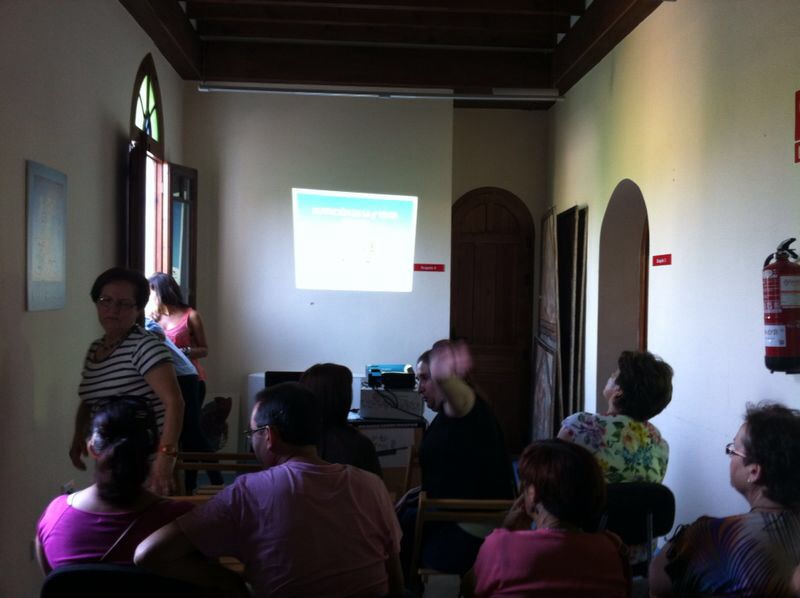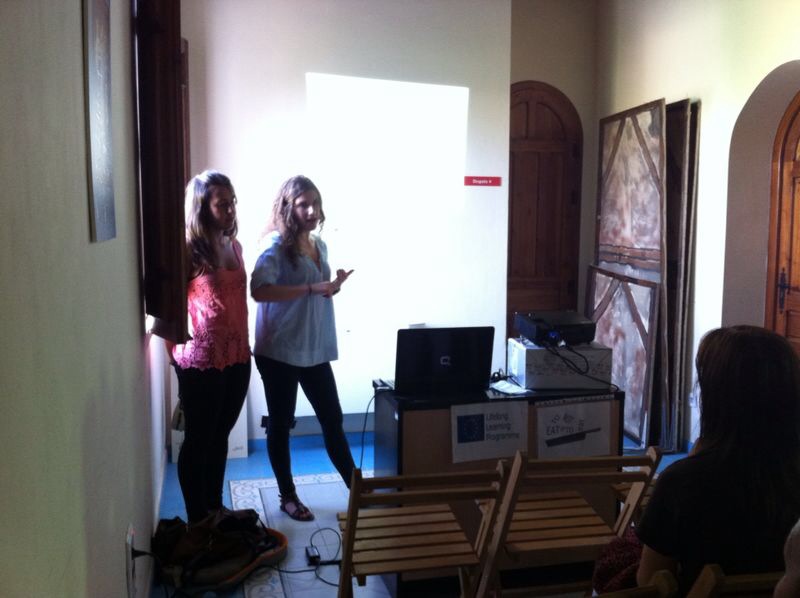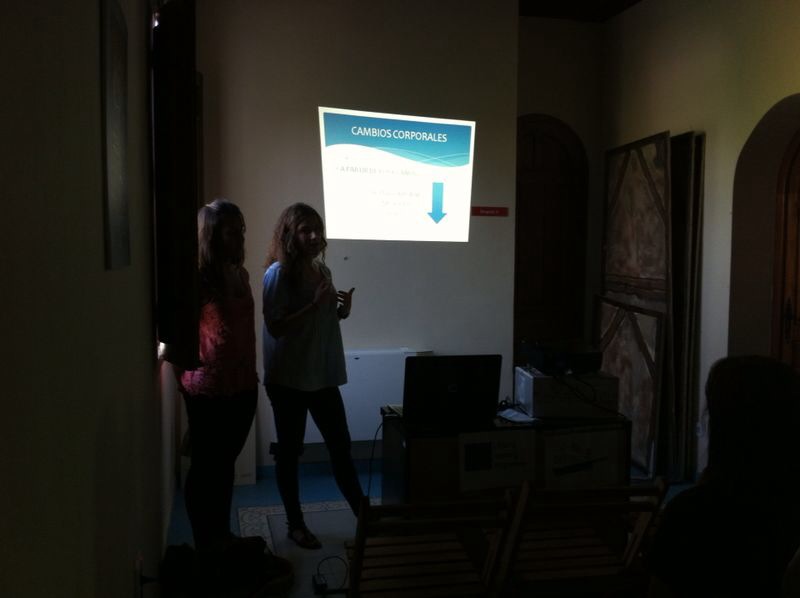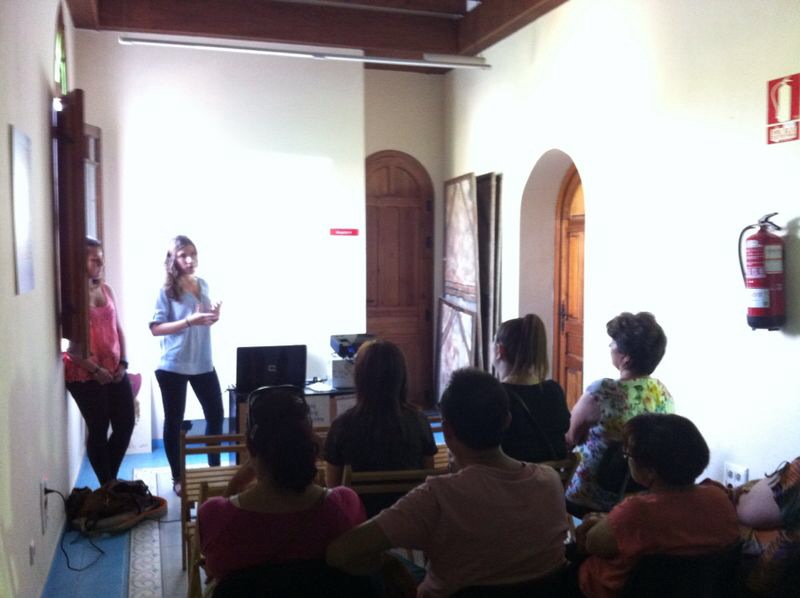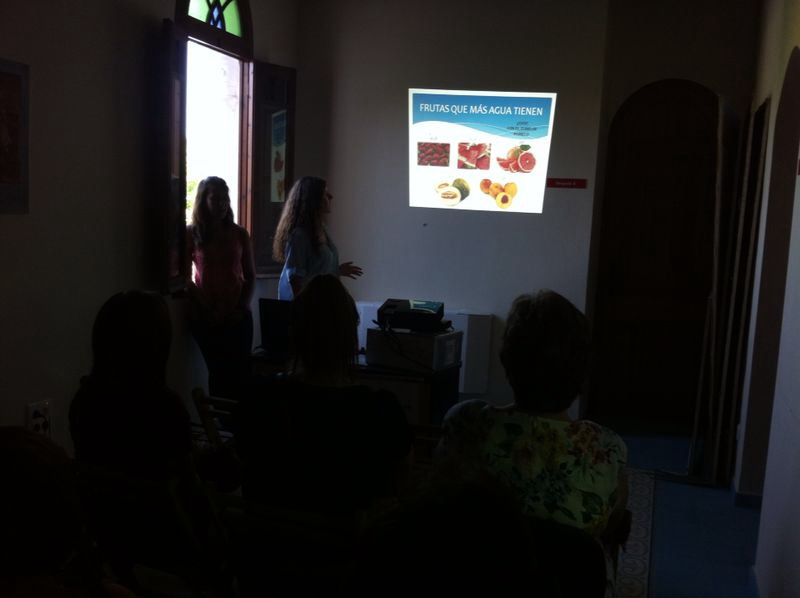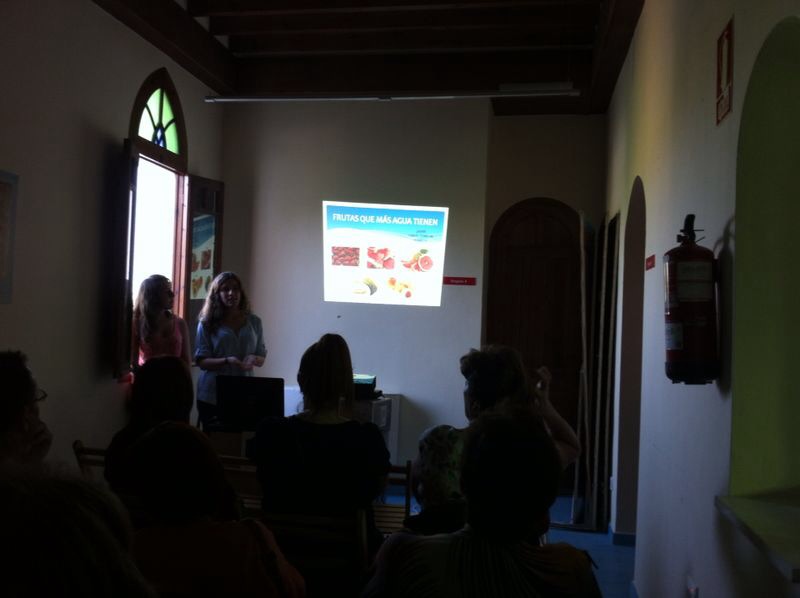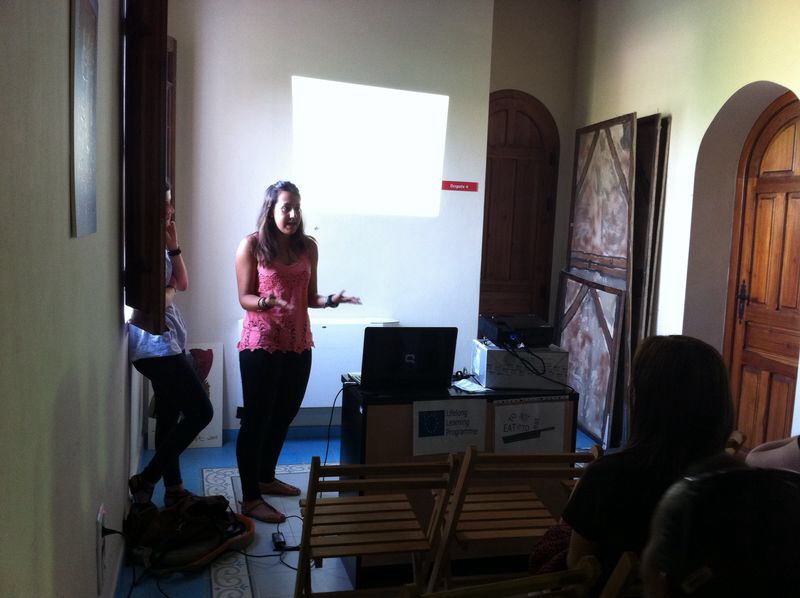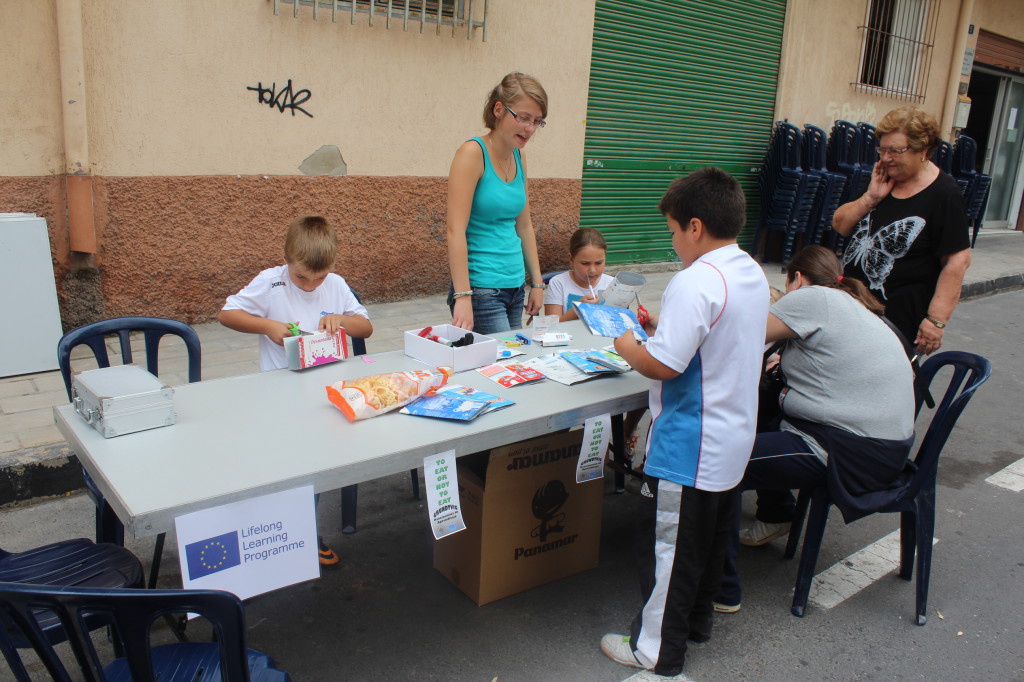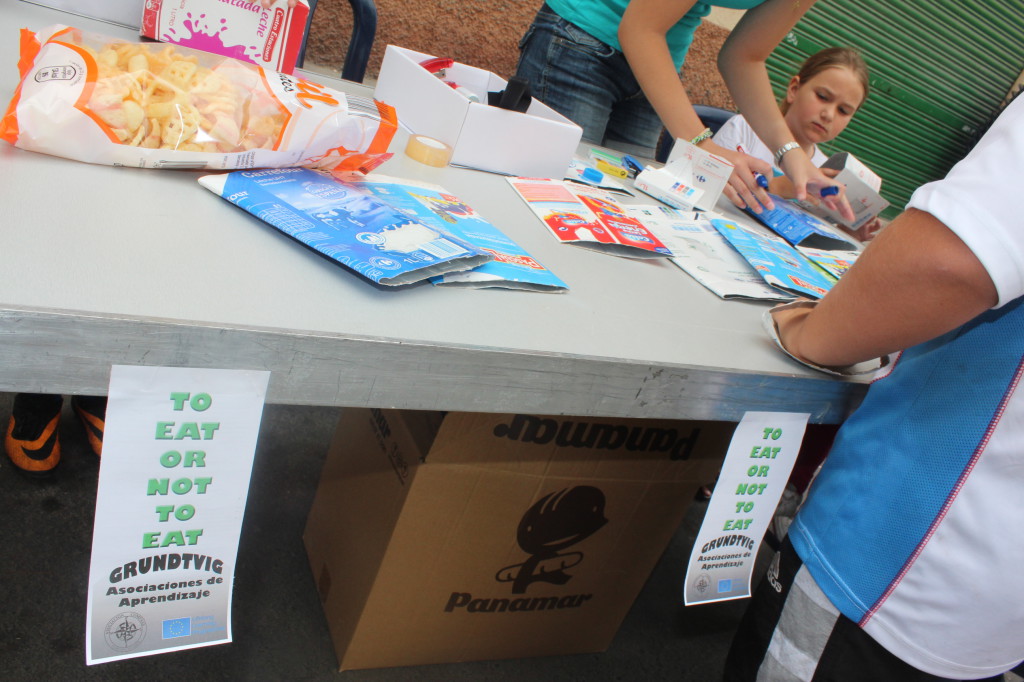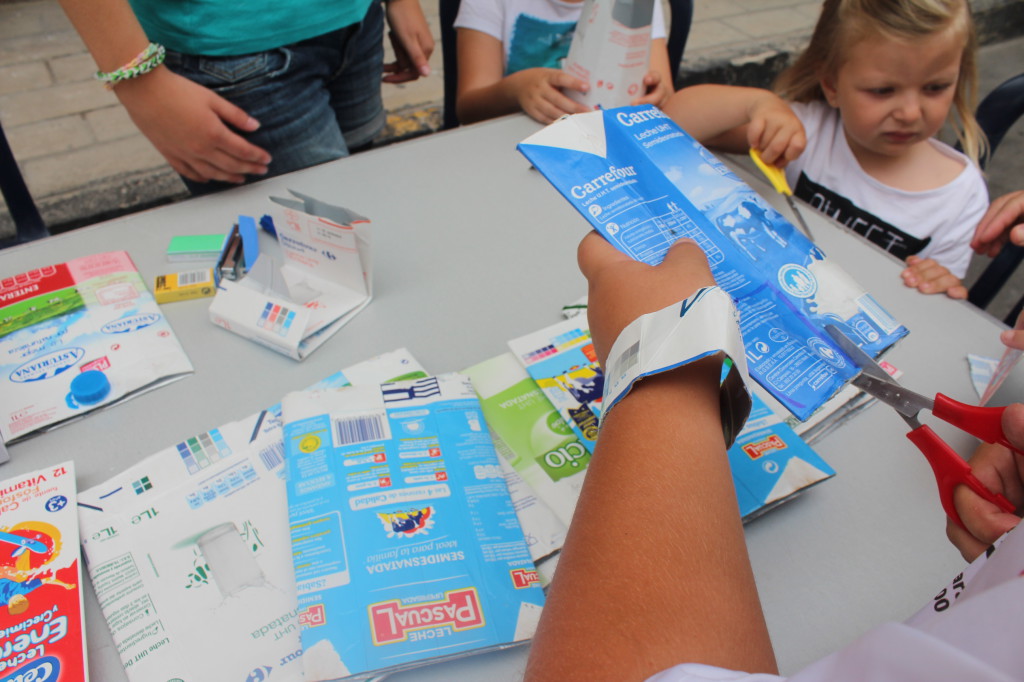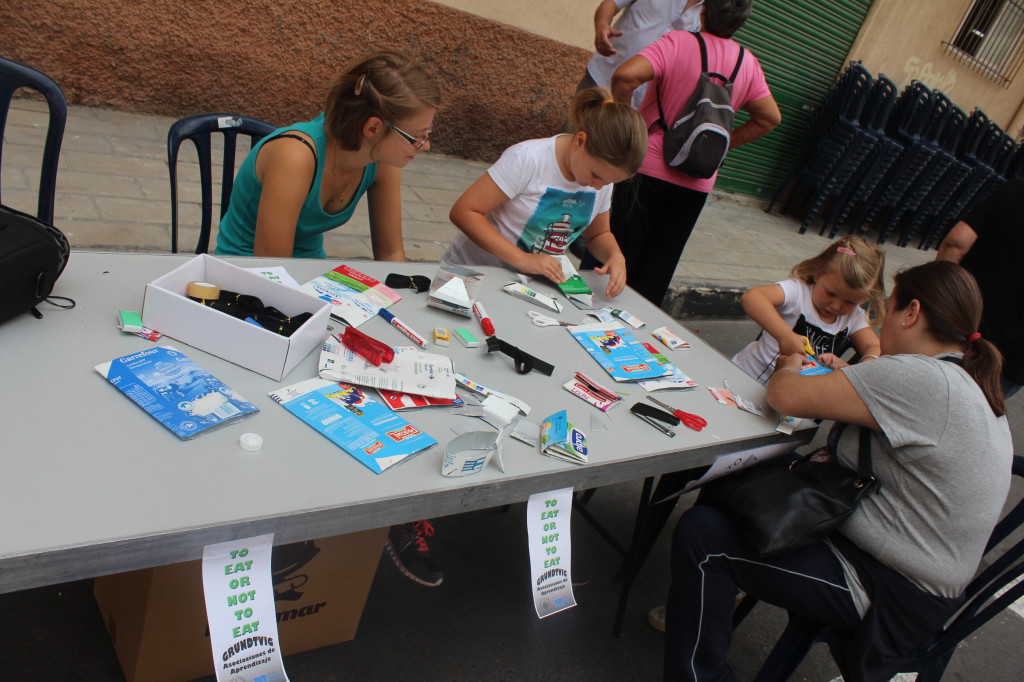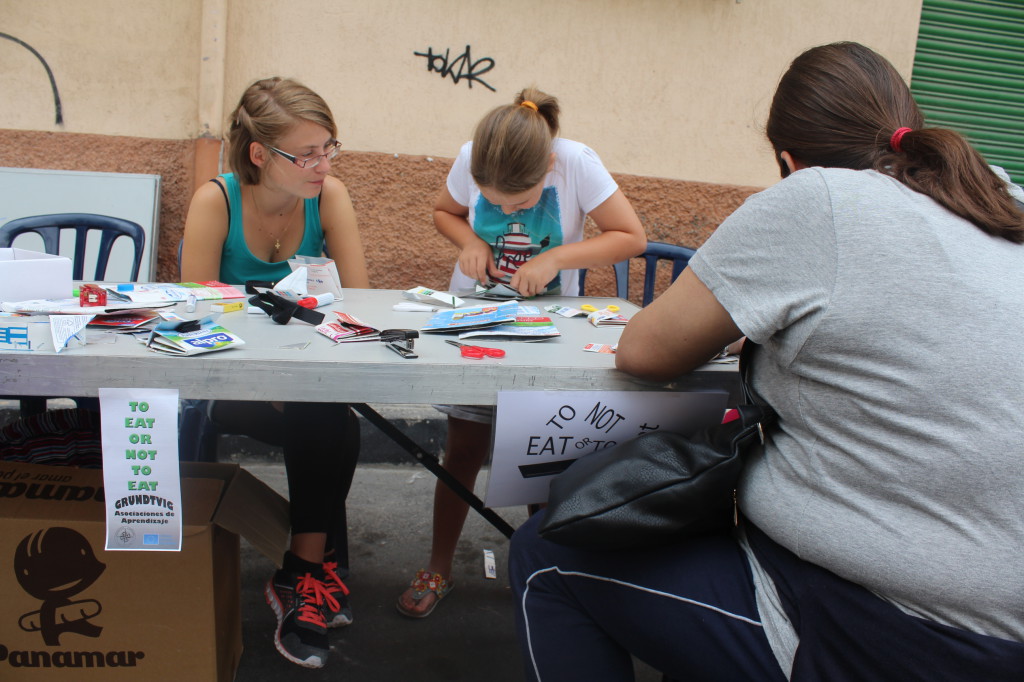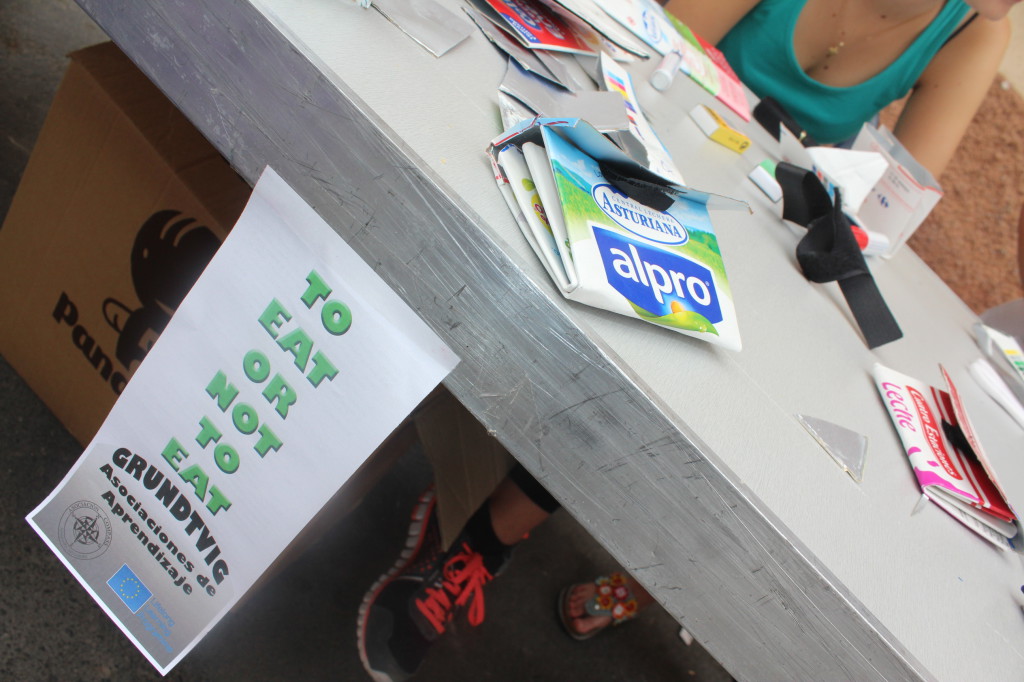Author Archives: admin
To eat or not to eat – Se convocan as becas de prácticas en Seguros Agrarios
El Ministerio de Agricultura, Alimentación y Medio Ambiente ha convocado becas de prácticas en Seguros Agrarios para titulados universitarios para favorecer la formación y el perfeccionamiento técnico-profesional en materia de seguros agrarios.
Requisitos
Ser español o ciudadano de algún Estado miembro de la Unión Europea o de terceros países residente en España.
Dominio del español.
Estar en posesión o en condiciones de obtener el título de graduado, diplomado, licenciado, ingeniero técnico o superior, doctor, o titulaciones equivalentes en las materias relacionadas con la beca.
Conocimientos específicos relacionados con seguros y seguros agrarios.
El programa de las becas de prácticas incluye
Análisis de las bases técnicas y de los cálculos actuariales de los componentes de las primas de los diferentes riesgos que los seguros agrarios cubren en la actualidad
Apoyo técnico en el seguimiento y elaboración de los Planes de Seguros Agrarios Combinados.
Elaboración de estudios de ámbito general o específico relacionados con el seguro agrario.
El plazo de solicitud para las becas de prácticas en Seguros Agrarios para titulados universitarios termina el 14 de junio de 2014.
http://canal.ugr.es/images/stories/convocatorias/BG1MAAMAseguros_agrarios220514.pdf
Mercado Medieval Alicante

http://www.alicante.es/comunes/noticias/baja_adjunto.php?depto=60101&codigo=1920&adjunto=1
Fotos del evento de promoción del proyecto junto con talleres
To eat or not to eat – Encuentro en Hungria
Buenas a todos
Aqui os adjuntamos el diario del encuentro que se realizao en hungria dentro del proyecto To eat or not to eat que la orgnaización esta realizando.
Ideas, aventuras, aprendizaje, talleres, actividades, etc, todo lo que nuestras compañeras vivieron.
TO EAT OR NOT TO EAT
Gardony. Hungría. 30/04/14 – 4/05/14
Participante: Lorena Arcos Palacios
He aprendido
Los usos del saúco y del carrizo en Hungría.
El funcionamiento de las familias de abejas.
El cultivo de fresas en clima continental.
El folclore húngaro: canciones y bailes.
Que el clima no es tan duro como pensaba; de hecho es bastante parecido al del norte de España.
Hemos hecho
Taller de pancakes: con la masa ya hecha una persona de cada organización fue a la cocina y echó un poco de masa en la sartén y la cocinó hasta conseguir una especie de crepe (que más tarde nos comimos con mermelada).
Taller de especias y mermeladas: con el olfato y el gusto tuvimos que reconocer las diferentes plantas aromáticas utilizadas en la cocina húngara que estaban secas y guardadas en tarros de cristal. También se hizo lo mismo pero probando las mermeladas. Luego anotamos todo en un papel para que nos lo corrigieran las lugareñas. Aunque no se dieron los resultados correctos.
Visita a granja ecológica: visita por los aledaños de la finca y a la zona de producción de miel, dentro de la casa.
Taller de queso: la chica nos explicó oralmente cómo hacía el queso, degustamos los diferentes quesos que hacía, ya que estaba comenzando en el negocio. Luego nos dieron un trozo de queso fresco que tuvimos que trocear y meter en un tarro con aceite y olivas sin hueso (nos llevamos el tarro a casa).
Taller de saúco: una productora ecológica de mermelada de saúco nos explicó cómo la hacía y luego nos explicó cómo hacer un almíbar donde macerar flores de saúco y limones para hacer el sirope de saúco. Tras las explicaciones estuvimos cortando limones en rodajas y echándolas junto con las flores de saúco en el almíbar. Se removió y se dejó macerar hasta el siguiente día que se probó.
Visita a bodega: nos explicaron cómo hacían el vino y degustamos pálinka y luego pasamos a una sala donde nos colocaron en una gran mesa para cenar a la vez que degustábamos 5 tipos diferentes de vino.
Visita a finca de fresas: nos explicaron cómo producían las fresas y los cultivos rotativos tras el aprovechamiento del fresal. También nos explicaron cómo las comercializaban. Compramos fresas para el taller de mermelada.
Taller de mermelada: se trocearon las fresas compradas en la finca y se pusieron a cocer junto con el azúcar. Tras unas 2 horas cociendo y removiendo se embotó (nos llevamos un tarrito de mermelada a casa).
Taller de decoración de galletas: la encargada de este taller llevó galletas hechas y cada uno cogimos 4. Hicimos una mezcla de clara de huevo, limón y azúcar glass, la metimos en una bolsita usada como manga pastelera y decoramos las galletas. Por encima.
Evaluación: cada grupo se presentó y luego estuvimos rellenando los cuestionarios de evaluación.
Lo más significativo
La hospitalidad húngara, cuando se trata de grupos organizados.
La organización y el cumplimiento de los horarios.
Los dulces
La utilización de la madera para todo tipo de construcciones y aperos. Para ello la cultivan.
El aprovechamiento de todos los materiales orgánicos, ya que cada zona ajardinada municipal está acolchada con restos orgánicos triturados.
Nuevas ideas
-Comercialización de productos locales mediante ventas menores (las mujeres del coro “vendían” las mermeladas que elaboraban mediante la venta de tikets para verlas cantar y regalaban un tarro de mermelada.)
-Para conocer y calcular la producción de miel se coloca una colmena sobre una romana y cada día se anota la variación de peso.
-Creación de charcas naturales colocando un lecho de arcillas, para abrevadero del ganado.
-Utilizar el carrizo para hacer un entramado y colocarlo de capa para tejados de chozas.
-Creación de una empresa de producción de fresas.
Resumen en general del encuentro
El primer día nos llevaron a dar una vuelta por Gardony montados en coches de caballos hasta llegar a una especie de área recreativa municipal donde nos recibió un coro de mujeres cantando canciones folclóricas. Luego el Alcalde nos dio la bienvenida y fuimos al comedor donde hicimos dos actividades con las mujeres del coro y los músicos: una de cocinar unas pancakes típicas húngaras y otra la de reconocer hierbas, especias y mermeladas mediante el olfato y el gusto.
Tras la comida, preparada por el grupo de música folclórica, estuvimos tocando, cantando y bailando todos juntos hasta que nos despedimos para ir a visitar una granja ecológica cercana. Allí, el dueño nos mostró una estación de anillamiento, la sostenibilidad en el uso de los prados donde pastan sus reses y las plantas y animales que forman parte de su ecosistema rural. Nos mostró su explotación melífera y la producción de compost.
Tras la jornada organizada fuimos a dar una vuelta por la feria de productos tradicionales húngaros que se celebraba a la vez que el encuentro, donde pudimos degustar quesos, licores, dulces y comidas típicas. También estuvimos viendo diferentes conciertos de música húngara de diferentes estilos.
El segundo día conocimos Chesnut Garden, donde acudimos para hacer dos talleres: un taller de degustación-aliño de quesos y otro de elaboración de sirope de saúco. Durante la mañana pudimos conocer el lugar que es como una especie de centro social autogestionado con diferentes espacios para compartir, como: sala de lactancia, sala de esoterismo, sala de meditación, sala de juegos…y también donde la gente acude para hacer manualidades, jugar, bailar, coser, compartir conocimientos, etc.
Fuimos a comer a un restaurante típico (gulash) y en el tiempo libre que tuvimos tras la comida intentamos visitar la fábrica local de palinka, cosa que no pudimos hacer, pues no hablaban inglés en las visitas guiadas turísticas y tampoco dejaban traducir. Por la tarde fuimos a visitar una bodega donde hicimos una cata de 5 vinos y nos dieron de cenar.
El tercer día fuimos por la mañana a visitar una finca de producción local de fresas y allí compramos 20 kilos para elaborar mermelada con ellas. Tras la visita fuimos a Chesnut Garden y allí se hizo el taller de mermelada simultáneamente al taller de decoración de galletas. Luego nos prepararon un pic-nic y comimos allí mismo. Tras la comida tuvimos un poco de tiempo libre para hacer unas compras en la feria y luego fuimos al hotel para hacer la evaluación. Abrimos la evaluación del proyecto con una breve presentación de cada organización y luego estuvimos rellenando los cuestionarios que nos pasaron. Al terminar cenamos en el hotel, recogimos y nos despedimos.
Experiencia personal
Personalmente ha sido una experiencia muy positiva, pues he desconectado de la rutina y creo que he logrado aprovechar al máximo el tiempo que teníamos en nuestras manos para conocer la cultura húngara, para saber cómo funcionan allí, para entender las cosas de cada día y sobre todo para disfrutar de cada detalle y aprender. También me ha hecho bien relacionarme con diferentes personas y aprender de ellas.
Por otro lado, en lo que respecta al proyecto, me parece muy interesante, pues en poco tiempo te puedes hacer una idea general del país y sus costumbres, aunque he encontrado que las actividades que hemos hecho han sido muy poco contundentes, ya que casi en todas hacíamos una pequeña parte del proceso. Entiendo que para hacer este tipo de actividades con un grupo tan numeroso sea difícil, pero a mí se me ha quedado corto.
De hecho, en algunas actividades teníamos que esperar muchísimo para que nos tocara hacerlas o incluso a veces se acababan los recursos para todos.
En lo que respecta a los talleres no es que haya aprendido gran cosa. Me hubiera gustado, por ejemplo, hacer queso desde la leche hasta el final o haber hecho alguna comida típica, o haber elaborado nosotros las galletas, haberlas horneado…y al final decorarlas.
También he echado de menos que nos hayan llevado a una finca de producción de hortalizas, ya que forma parte de la base alimentaria húngara, pero sin embargo no hemos tocado nada de agricultura.
A pesar de que casi no he tenido problemas de entendimiento con el inglés, creo que la diferencia de idioma es una barrera para no entender al 100% la cultura de un país, puesto que los húngaros no sabían inglés y el resto de participantes (salvando a los traductores) tampoco y a veces no hemos podido hacer lo que teníamos pensado o no hemos podido preguntar a los lugareños dudas cuando los traductores estaban ocupados, o entendernos con el personal del hotel, o relacionarnos con otros participantes…
To eat or not To eat (Queso fresco de forma tradicional)

El queso fresco se obtiene por distintos procesos a partir de leche generalmente de vaca pasteurizada, pero también de oveja y cabra. Entre ellos y el que vamos a ver aquí, denominado coagulación ácida que se basaría en añadirle un ácido ya sea cuajo, zumo de limón o bien bacterias de tipo estreptococos. Esto provocará que la lactosa, que es el azúcar que contiene la leche, pase a ser ácido láctico que hace que las proteínas lácteas coagulen transformándose en compuestos más simples que son también mucho más digeribles por el organismo.
Este sería el método tradicional, a nivel industrial también se produce queso fresco por ultrafiltración. La leche se pasaría por una serie de membranas en las cuales quedarían retenidas la grasa y las proteínas. Posteriormente, se añade al envase y se le adiciona el cuajo, con lo que por este método el queso fresco ya se forma en el propio recipiente.
Principales tipos de queso fresco
No se debe confundir o hacer sinónimo al queso fresco con el queso de Burgos, ya que este no es ni mucho menos el único. En nuestro continente sin ir más lejos, encontramos gran variedad de quesos frescos tales como mozarella, quark, queso feta, ricotta o requesón. Pero también los conocidos Villalón, mascarpone o un poco más lejano el cotagge, muy popular en Estados Unidos.

Valor nutritivo del queso fresco
En la leche existe un noventa por ciento de agua en su composición, reduciéndose el porcentaje al aproximadamente el setenta por cien en el queso fresco, esto hace que se concentren los principios nutritivos que posee la leche en pequeñas porciones.
Destacan formando parte de su composición, proteínas de alto valor biológico, calcio de fácil asimilación pero también minerales como el magnesio, fósforo y vitaminas del grupo A, B y D. Siendo la cantidad de grasa variable en función del tipo de leche y de si se le añade nata y azúcar.
El queso fresco destaca por lo versátil que es en la cocina, su alta capacidad nutritiva, así como por su bajo contenido en grasa en comparación con otros quesos. Además suele ser muy bien aceptado por los niños debido a su sabor suave y poco ácido.
Cómo prepararlo fácilmente en casa
Desde muy antiguo el queso fresco era alimento de pastores y campesinos. Hoy es sencillo encontrar cualquiera de las variedades antes citadas en el lineal del supermercado, disfrutando de gran cantidad de marcas, tamaños y variedades. Pero hacerlo en casa es bien sencillo y gratificante, pues no necesitamos de cuajos especiales ni reposos largos, pudiendo prepararse con o sin molde.
Por eso hoy vamos a ver cómo hacer un pequeño queso fresco casero que os sorprenderá por su textura y sabor, puesto que es bastante distinto al industrial que suele presentar una textura más lisa y algo gelatinosa.

Para hacerlo vosotros mismos solo necesitaréis de unos ingredientes bien sencillos, un litro de leche fresca pasteurizada, cuarenta y cinco mililitros de zumo de limón y un pellizco de sal. Este que os traigo hoy lo voy a enriquecer con la mitad de un yogur natural y dos cucharadas de nata, que podéis suprimir tranquilamente si no le queréis añadir más grasa que la que trae ya la leche de por sí. Como instrumentos necesitaréis una olla alta, un colador grande, una gasa como las de los pañales de bebé y un bol para recoger el suero.
Comenzaremos calentando el litro de leche que no puede ser de tetra-brick sino fresca pasteurizada, de la que encontráis en las neveras de los supermercados donde los lácteos. A fuego muy lento la iremos calentando hasta que comience a formar pequeñas burbujas alrededor de la olla, en este momento la retiramos y la dejamos reposar unos veinte minutos.
Cuando pase este tiempo añadimos el zumo de limón, el yogur y la nata, revolvemos para integrar los ingredientes y volvemos a dejarlo reposar otros diez minutos.

Llevamos de nuevo la olla al fuego y calentamos a fuego medio hasta que veamos que la leche se corta y se separa en una parte sólida y otra líquida. Añadimos la sal y removemos. Preparamos un colador al que hemos colocado una gasa grande y vertemos la mezcla haciendo un hatillo, escurriendo nuestro queso fresco. Lo dejamos drenando durante treinta minutos como mínimo en la nevera. Podemos darle forma en un recipiente de plástico como por ejemplo una terrina de mantequilla vacía. Cuando coja forma lo pasamos para un plato.
Conservación y consumo
El queso fresco debe de estar siempre refrigerado y en la parte más fría de la nevera, a una temperatura no superior de cuatro grados centígrados. Este tipo de queso posee mucha agua en su composición lo que lo hace blanco fácil de hongos y bacterias. Se debe de consumir por ello rápidamente en unos pocos días.
Cuando lo vayamos a tomar se puede degustar solo o bien como entrante o postre acompañándolo con miel, frutos secos, dulce de membrillo o formando parte de una ensalada. Además lo podemos usar en preparaciones de horno como es el caso de las tartas de queso.
To eat or not to eat – Paginas cocina tradicional
To eat or not to eat – Flan de turron
Flan de Turrón
Ingredientes
- 1/2 l leche
- 4 cucharadas soperas azúcar
- 4 huevos
- 1 tableta turrón de Jijona
- azúcar para caramelizar
Preparación
- El caramelo se hace directamente en el molde donde se va a cuajar el flan. Para ello se humedece y se añade un poco de azúcar, se pone al fuego y enseguida toma color. Se mueve para que el fondo quede bien cubierto con el caramelo y se reserva. Me gusta dejarlo muy rubito, porque luego se oscurece un poco
- Se mezcla la leche, que no esté fría, con los huevos, el resto del azúcar y con el turrón troceado y se pasa todo por la batidora, procurando que no haga espuma. Esta mezcla se pone en la flanera.
- El paso siguiente consiste en cuajarlo al baño maría. Se puede hacer en el horno, dejando la flanera en un recipiente con agua y a 180º hasta que esté bien cuajado
- Pero yo lo hago en la olla a presión, por eso utilizo como molde una fiambrera que cierra herméticamente: Se pone en la olla, con el agua que cubra hasta la mitad de la flanera, se tapa y se deja 15 minutos con la olla echando vapor.
- Cuando se saca de la olla, se quita la tapadera metálica y se cubre con un trapo de cocina húmedo. Una vez que se ha enfriado, se guarda en el frigorífico, cubierto con el trapo húmedo, porque ésto ayuda a que le aflore bien el almíbar a la superficie. Está más rico cuando se hace de un día para otro, y eso es una ventaja para las fechas que se avecinan
To eat or not to eat – ECOMERCAT HUIT i MIG 2014
Buenas a todos
Dentro del proyecto to eat or not ot eat, la asociación va a colaborar en el evento que se celebrara el próximo 4 de mayo de 2014 en la sierra del molar.
Alli no veremos.
Saludos
To eat or not to eat – Participación Encuentro Hungria
Dos socias de nuestra asociación Lorena y Silvia van a participar a partir del 30 de Abril al 4 de mayo en el segundo encuentro dentro del proyecto Europeo Grundtvig que la asociación tiene aprobado con el nombre To eat or not to eat.
Esperamos que aprendan muchas cosas y que a su regreso nos lo puedan contar todo.
Os adjuntamos lo que van hacer por tierras hungaras:
Compass Team


